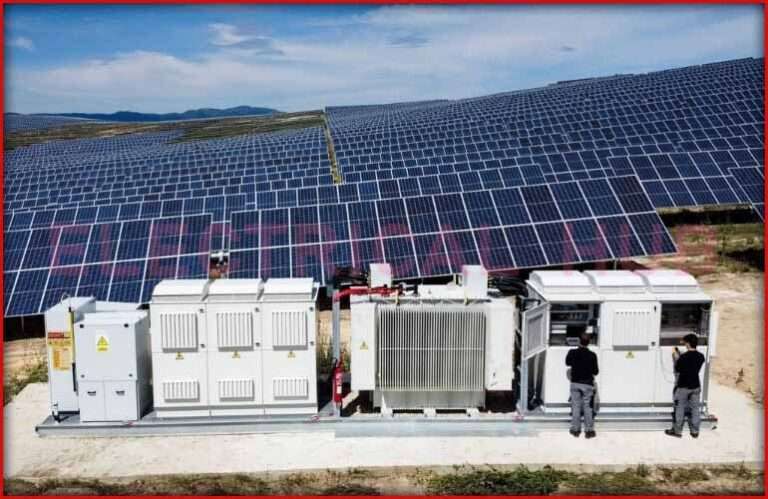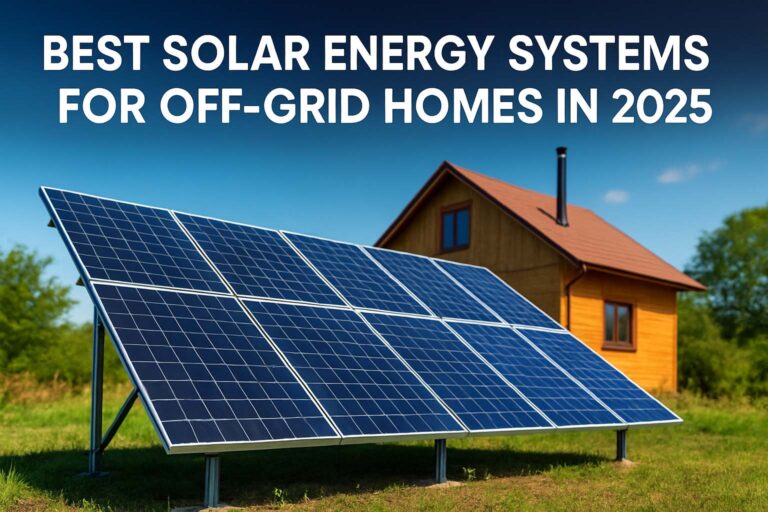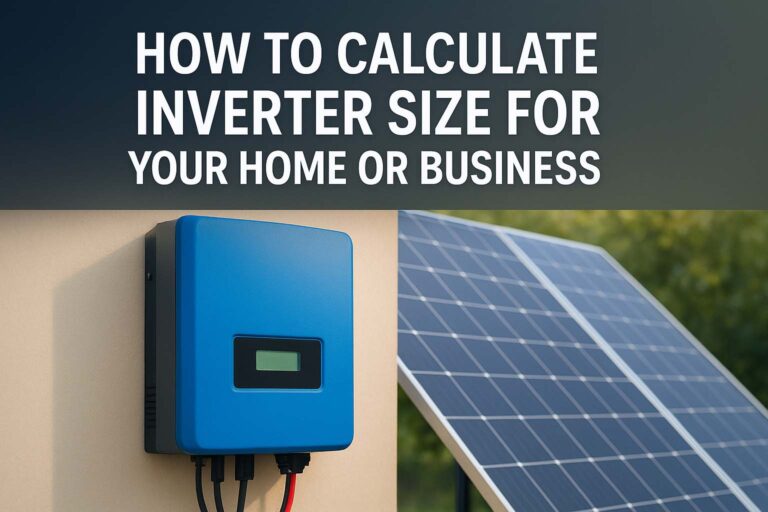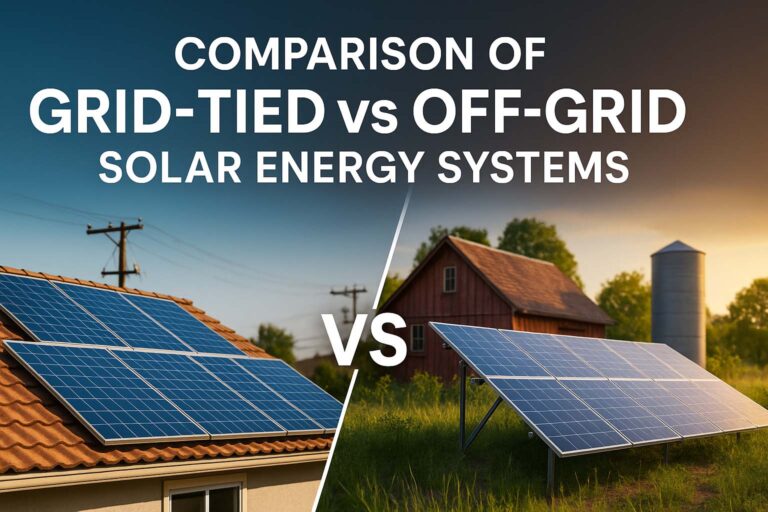Bifacial vs Monocrystalline Solar Panels: 2025 Cost & Performance Review Guide
Choosing the right solar panel technology is one of the most important steps when investing in solar energy. In 2025, two of the most popular choices are bifacial and monocrystalline solar panels. Both have distinct advantages, costs, and performance characteristics. This detailed comparison will help you understand which type is the better fit for your home or business.
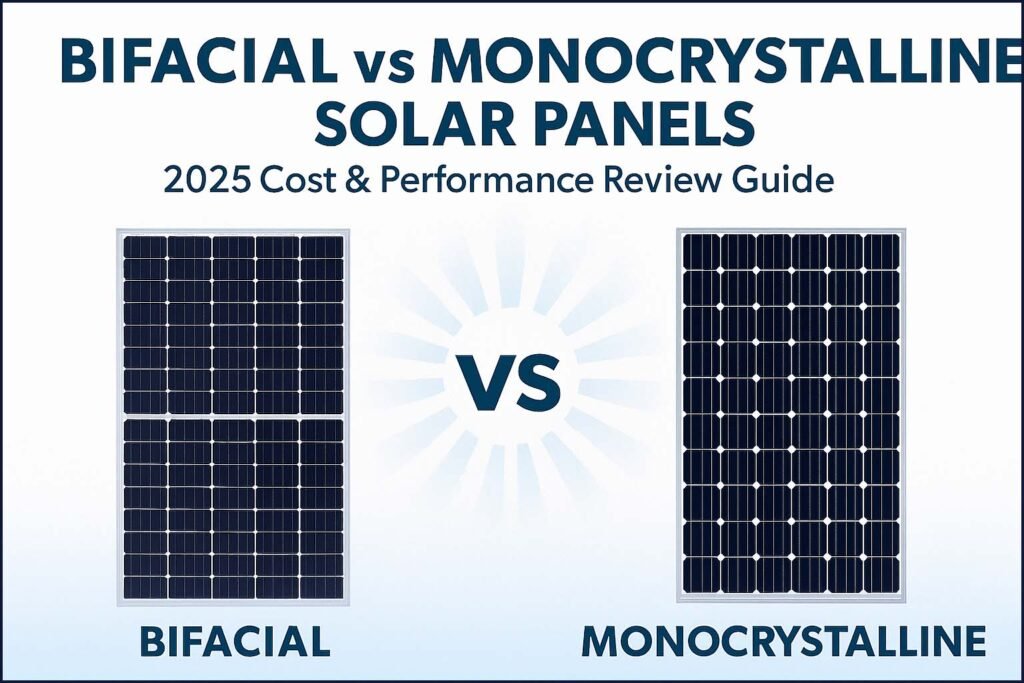
Table of Contents
The solar industry continues to evolve rapidly, with new innovations making solar systems more efficient and affordable. Understanding Bifacial vs Monocrystalline Solar Panels can save you thousands over the life of your solar system while maximizing your energy output.
What Are Monocrystalline Solar Panels?
Monocrystalline solar panels are made from a single crystal structure, typically pure silicon. These panels are known for their high efficiency and sleek black appearance. Because they are made from a single silicon crystal, electrons move more freely, resulting in better performance.
Monocrystalline panels are the most commonly used in residential installations and are often considered the premium choice. Their efficiency rates usually range from 19% to 24%, depending on the manufacturer and technology.
They perform exceptionally well in limited spaces since they generate more power per square meter compared to other types like polycrystalline panels.
Key Features of Monocrystalline Panels
- Made from a single silicon crystal
- Higher efficiency compared to other traditional panels
- Long lifespan, typically 25–30 years
- Better performance in low-light conditions
- Compact size suitable for rooftops with limited space
Know more about Solar Energy Systems Rental Dubai – Affordable Solar Power on Rent for Homes & Businesses
Monocrystalline panels are the foundation of modern solar systems, offering reliability and consistent energy generation for both residential and commercial users.
What Are Bifacial Solar Panels?
Bifacial solar panels are a newer technology that captures sunlight from both the front and the back of the panel. This unique design increases total energy output. The rear side of the panel captures reflected light from the ground or surrounding surfaces, effectively generating additional electricity.
Bifacial panels can be either monocrystalline or polycrystalline in structure, but most high-end models in 2025 use monocrystalline cells for maximum efficiency.
They are most effective in open spaces such as solar farms, parking structures, or commercial rooftops where the reflected light (albedo) can be maximized.
Key Features of Bifacial Panels
- Absorb sunlight on both sides
- Up to 15–25% more energy generation
- Best suited for elevated or ground-mounted systems
- Long durability with double-glass design
- Ideal for large-scale installations or commercial sites
Bifacial solar panels are gaining traction because they deliver more power per installation, improving return on investment and reducing the levelized cost of electricity (LCOE).
Bifacial vs Monocrystalline Solar Panels: Key Differences
The following table provides a quick comparison between bifacial and monocrystalline solar panels in terms of efficiency, cost, and performance in 2025.
| Feature | Bifacial Solar Panels | Monocrystalline Solar Panels |
|---|---|---|
| Energy Capture | Front and back sides | Front side only |
| Efficiency Range | 20%–27% (with reflected light) | 19%–24% |
| Cost (2025 Average) | $0.45 – $0.70 per watt | $0.35 – $0.60 per watt |
| Ideal Installation | Ground-mounted, open areas | Rooftop, limited space |
| Energy Gain | Up to 25% higher output | Standard output |
| Durability | High (double glass) | High (single glass) |
| Lifespan | 30+ years | 25–30 years |
| Aesthetic | Transparent backsheet | Black uniform look |
| Maintenance | Slightly higher | Low |
The major advantage of bifacial panels lies in their dual-sided generation, which increases total energy yield. However, they are more costly to install and require specific environmental conditions to perform at their best.
Use our online tool Solar Panel Size Calculator by Load – Find the Right System for Your Power Needs
Efficiency Comparison in Real-World Conditions
While datasheets may promise high efficiency, real-world results depend on installation setup and location. Monocrystalline panels maintain strong performance even on rooftops or shaded environments. Bifacial panels, on the other hand, show superior performance when installed over reflective surfaces such as white concrete or sand.
In 2025, efficiency improvements in both technologies have narrowed the gap. Top-tier monocrystalline panels like the LONGi Hi-MO X6 or REC Alpha Pure-R can achieve up to 24.5% efficiency, while bifacial modules like the JinkoSolar Tiger Neo can reach 27% under optimal reflection conditions.
Example: Energy Output per 1kW Installed System
| Panel Type | Average Daily Output (kWh) | Annual Output (kWh) |
|---|---|---|
| Monocrystalline | 4.0 – 4.5 | 1,460 – 1,640 |
| Bifacial | 4.6 – 5.2 | 1,680 – 1,900 |
This additional generation from bifacial panels can make a big difference in regions with high sunlight and reflective ground conditions.
Cost Analysis: 2025 Market Review
In 2025, global solar prices have continued to drop thanks to increased production capacity and better cell technology. However, bifacial panels still cost slightly more due to their complex manufacturing and installation requirements.
Average System Cost in 2025
| System Size | Monocrystalline (USD) | Bifacial (USD) |
|---|---|---|
| 5 kW System | $5,000 – $6,500 | $6,500 – $8,000 |
| 10 kW System | $9,500 – $12,000 | $11,000 – $14,000 |
| 50 kW System | $45,000 – $60,000 | $55,000 – $70,000 |
While bifacial systems have a higher upfront cost, the long-term benefits can offset the investment due to their increased energy output and durability.
Performance Over Time
Durability is another factor in deciding between bifacial vs monocrystalline solar panels. Both panel types use robust materials designed to withstand weather, temperature, and mechanical stress.
Bifacial panels use dual-glass layers, making them more resistant to moisture and mechanical wear. Monocrystalline panels use a backsheet design that is lighter and easier to install but can degrade slightly faster under harsh environmental conditions.
When comparing performance degradation:
- Monocrystalline panels lose about 0.5% efficiency per year
- Bifacial panels typically lose around 0.3% per year
That means over 25 years, bifacial panels could retain 93% of their initial output, while monocrystalline might retain about 88–90%.
Know more about How to Make a Solar Water Heater from Plastic Bottles: Step by Step Guide
Which Type Should You Choose in 2025?
Choosing between bifacial and monocrystalline panels depends on your space, location, and budget.
If you have limited rooftop space and want a clean, aesthetic setup, monocrystalline panels remain the best choice. They are efficient, reliable, and widely available with proven long-term performance.
However, if you are installing a ground-mounted or commercial solar system where reflected light can be utilized, bifacial panels can deliver significantly higher energy yields and faster payback.
Ideal Use Cases
- Residential rooftops: Monocrystalline
- Commercial roofs and carports: Bifacial
- Ground-mounted solar farms: Bifacial
- Limited space urban buildings: Monocrystalline
- Reflective environments (sand, snow, concrete): Bifacial
Environmental and Aesthetic Considerations
Monocrystalline panels are usually black with a uniform look, which blends well with modern architecture. Bifacial panels, on the other hand, have a transparent or glass-back design that can add a futuristic appearance to commercial structures.
Use our online tool Solar Panel Calculator for Home – Find Your Perfect System Size and Savings
Environmentally, bifacial systems produce more energy with fewer panels, reducing land usage for large solar projects. This makes them a sustainable option for companies focused on reducing carbon footprints.
Return on Investment and Payback Period
In 2025, the average payback period for a monocrystalline solar system ranges between 5 to 7 years, depending on electricity rates and available incentives. For bifacial systems, the payback period is slightly shorter, around 4.5 to 6 years, due to their higher energy generation.
Over a 25-year lifespan, bifacial panels can generate 10–20% more total electricity, meaning higher long-term returns even if the upfront cost is higher.
Final Verdict: Bifacial vs Monocrystalline Solar Panels
When comparing Bifacial vs Monocrystalline Solar Panels, both technologies have strong advantages in 2025. Monocrystalline panels remain the go-to choice for homeowners due to their balance of efficiency, cost, and simplicity. Bifacial panels shine in open environments and commercial projects where they can take full advantage of reflected sunlight.
Know more about Solar Thermal Water Heater Cost – Complete Price Guide for 2025
If your project allows proper elevation and reflective surface optimization, bifacial panels can deliver exceptional long-term value. However, for compact residential installations, high-efficiency monocrystalline modules continue to be the most practical and cost-effective solution.
In summary:
- Monocrystalline panels are best for smaller rooftops and aesthetic appeal
- Bifacial panels are best for high-output, large-scale, or ground-mounted setups
- Both offer excellent efficiency, durability, and long-term savings
Understanding your site conditions and energy goals will help you make the right choice in this 2025 solar performance review guide. The future of solar energy lies in innovation, and both bifacial and monocrystalline technologies are leading the way toward a cleaner and more efficient world.
Follow Us on Social:
Subscribe our Newsletter on Electrical Insights for latest updates from Electrical Engineering Hub
#BifacialSolarPanels, #MonocrystallineSolarPanels, #SolarEnergy2025, #SolarPanelComparison, #GreenEnergy, #SolarPowerGuide, #RenewableEnergy, #SolarTechnology, #CleanEnergyFuture, #SustainableLiving, #SolarPanelCost, #SolarPerformance, #SolarInvestment, #HomeSolarSystems, #EcoFriendlyPower

